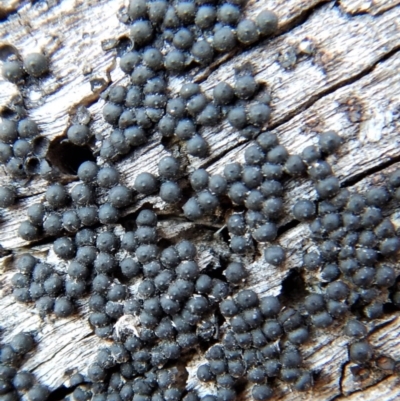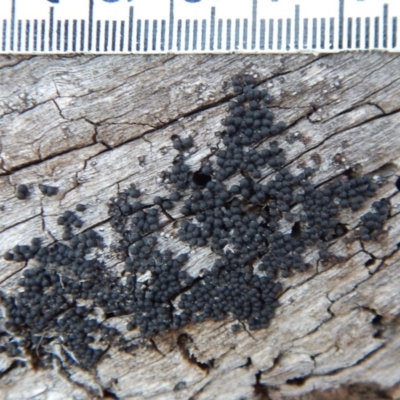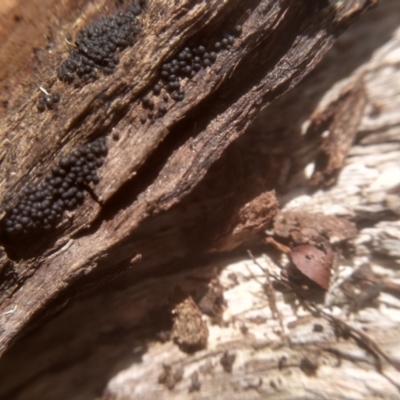Rosellinia group
The fruit bodies are hard, smooth, more or less hemispherical, black, 0.5-2 millimetres in diameter. The fruit bodies may appear in large groups and sometimes two fruit bodies may grow close enough to fuse. However, in a colony you will usually still see many non-fused fruit bodies, albeit perhaps lightly touching. At the apex of the fruit body there is a minute beak, in which there is a central channel though which the spores are released.
The fruit bodies occur on wood.
Rosellinia is a widespread genus, with very many species and one very likely to be seen. The fruit bodies develop on the surface of the wood. In some other genera the fruit bodies develop within the wood to at least some degree, with the fruit body therefore immersed in the wood to at least some degree. However, this may not always be easy to see, hence the category ‘Rosellinia group’ to encompass Rosellinia-like genera, where a photo cannot guarantee identification to genus.
Look-alikes
Fruit bodies of various species of Annulohypoxylon or Hypoxylon are also small, black hemispheres that appear in large groups. However, in these genera it is more common to see a colony of fruit bodies fused into what, from a little distance away, looks like a slightly bumpy black mat. There are also a number of genera with small, black, hemispherical, non-fused fruiting bodies that are not smooth or do not grow on wood or have diameters less than 0.5 millimetres.
Gallery
Regional distribution
Rosellinia group is listed in the following regions:









